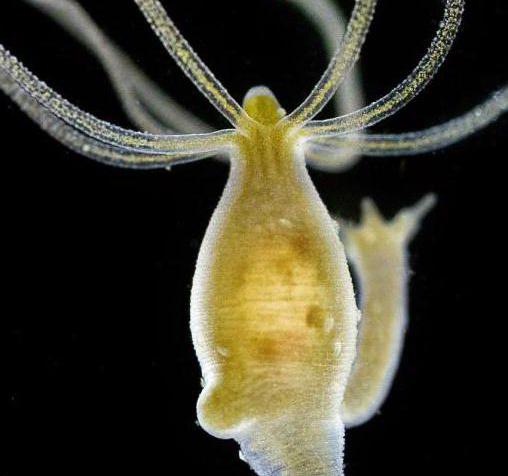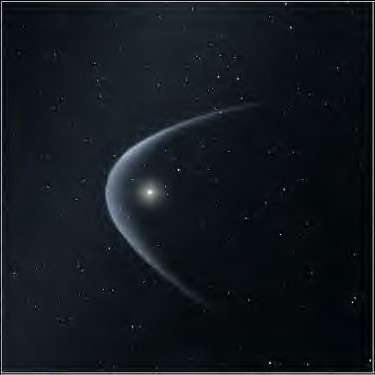Hydra - the simplest organism of the orderCoelenterates. This freshwater polyp lives in virtually every water body. It is a translucent gelatinous body, similar to a self-moving stomach, where the hydra digests food.

How does the hydra eat
The size of this simplest organism is rareexceeds 2 cm. Externally, the hydra resembles the mucous tube of a greenish or brown color. Its color depends on the food eaten. At one end of the body, it attaches to plants, stones or snags in the water, while the other catches prey. It is mainly small invertebrates - daphnids, cyclops, oligochaeta-naidids. Sometimes small crustaceans and fish fry serve as food.
Hydra's mouth opening is surrounded by tentacles,which number from six to twenty pieces. They are in constant motion. As soon as the victim touches them, the stinging cells located in the tentacles immediately throw out the pointed thread containing the poison. Sticking into the approaching animal, she paralyzes him and, pulling up with tentacles, brings it to her mouth. At the same time, it seems that her body is being put on the victim, thus appearing in the intestine, where the digestion of food from the hydra begins. Stinging capsule with poison can be used only once, after which it is replaced by a new one.
Structure of the digestive system
The body of the hydra is very similar to a two-layer bag, the outer layer of cells of which is called the ectoderm, and the inner one - the endoderm. Between them there is an unstructured substance called mesoglay.

The composition of the inner layer where the hydra occursdigestion of food, are mainly glandular and digestive cells. The first emit digestive juice into the intestinal cavity, under the action of which the eaten food is diluted and breaks up into small particles. Other cells of the inner layer capture these pieces and pull them inside.
Thus, the process of digestion begins in the intestinal cavity, and ends inside the endoderm cells. All food residues that could not be digested are thrown out through the mouth.
How does the digestion of food hydra
The digestive cells of the inner layer have onthe end of 1 to 3 flagella, by which small particles of food are drawn inside and digested. The lack of a transport system in the body of the hydra complicates the task of supplying the ectoderm cells with nutrients, given that the mesoglea is quite dense. This problem is solved due to the existing outgrowths on the cells of both layers. They cross the intercellular substance, connecting through the slit contacts. Organic molecules in the form of amino acids and monosaccharides, passing through them, provide nutrition to the ectoderm.
Glandular cells produce digestiveenzymes that enter the gastric cavity, where the hydra digests food. They break down proteins and prepare food for digestion. This is called abdominal digestion. It is characteristic of higher multicellular animals.

Когда пища переваривается внутри пищеварительных vacuoles are intracellular digestion characteristic of the simplest single-celled organisms. The combination of these two types of food digestion, ensuring the distribution of nutrients throughout the body, confirms the relationship of multicellular and unicellular animals.
When, where the hydra digests food, there is a waste of cellular metabolism, it is compressed, resulting in emptying.








